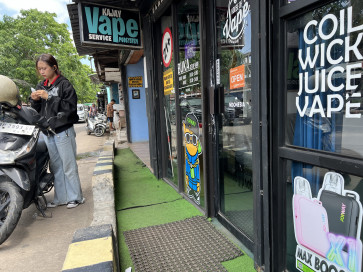Popular Reads
Top Results
Can't find what you're looking for?
View all search resultsPopular Reads
Top Results
Can't find what you're looking for?
View all search resultsInsight: Sunda Strait Bridge and public-private partnership confusion
The Sunda Strait Bridge is one of the most ambitious projects in our recent history
Change text size
Gift Premium Articles
to Anyone
T
he Sunda Strait Bridge is one of the most ambitious projects in our recent history. With the cost expected to reach Rp 225 trillion (US$24 billion) according to Deputy National Development Planning Minister Lukita D. Tuwo, this is one of the most expensive infrastructure projects in Indonesia.
After a long, drawn out gestation, the project recently made headlines after Finance Minister Agus Martowardojo proposed revisions to Presidential Regulation No. 86/2011 to bring the project in line with existing public-private partnership regulations.
Ideally, a public-private partnership works by injecting private money into a public project. Paradoxically, the partnership in the Sunda Strait’s case might end up as public money injected into a private project. The proposal from the finance minister to pay for a feasibility study using government cash could be seen as example of that phenomenon.
This project is the brainchild of Prof. Wiratman who dreamed up the idea of a bridge between Java and Sumatra. This project gathered momentum when Tomy Winata hashed out a joint venture with the local governments of Lampung and Banten. This in turn spawned PT Graha Banten Lampung Sejahtera, promoter of the project.
Independent Research and Advisory Indonesia (IRAI) was invited to make an early assessment of the project, later called a pre-feasibility study. With an assumed cost of US$10 billion to build the bridge, the study’s conclusion was that “on its own the project is neither financially nor economically viable”.
Even without conducting an expensive feasibility study it is important to recognize that purely from the “farebox model”, the project is not economically or financially feasible. “Farebox” is the fraction of operating expenses met by the users’ fares. With the cost now estimated to almost double, it is fair to assume that the payoff period for the bridge will become even longer.
To compensate for the inevitable shortfall, the project was converted from a pure bridge construction to the Sunda Strait Area Development Project: the development of industrial and property estates at both ends of the bridge. The economic rationale is that benefits from development should offset some costs of construction.
Even with area development, the project still needs risk mitigation and government support to
make it viable.
There are three important questions. Should Indonesia build a Sunda Strait Bridge at all? How will the bridge be financed? If based on a PPP modality, is this a solicited or unsolicited project?
Based on our preliminary findings, we believe that Indonesia should only build the Sunda Strait Bridge if there is a common understanding that the economic and social benefits will exceed the costs of the bridge construction.
Even without an expensive and detailed feasibility study we believe the decision to go ahead or not to go ahead can be made on the basis of this understanding, or lack of it. The real purpose of a detailed feasibility study should be to verify that understanding.
Who should finance and build the bridge? If the government believes that this is an important project and Indonesia has enough unspent funds for infrastructure, it should be financed purely from the state budget. However, at an early stage of the project there was a belief that the government alone could never afford it and the idea of a public-private partnership was floated.
In the case of a public–private partnership, it must be established whether this project is solicited or unsolicited. Unsolicited bid frameworks for public-private partnerships give preferential treatment to the initiator. This is probably the question which creates the tension between the various ministries.
Regrettably, objection to the project only came after Presidential Regulation No. 86/2011. Ideally, deciding who should pay for the feasibility study and the partnership’s framework should have been sorted out before presenting the project to the public.
Confusion about the framework adds justified uncertainty to the already fraught area of infrastructure financing in Indonesia.
It is high time for the administration to make a decision. The decision to “go ahead or not to go ahead” can be made even without any costly and all-inclusive feasibility study.
From discussion with PT Graha Banten Lampung Sejahtera, I am convinced that the initiator is willing to relinquish its preferential status if the government decides to take over the project and switch from public-private partnership to a wholly publicly funded venture.
Only limited data was gathered during the pre-feasibility stage, but it seems clear that without government support and guarantees, without proper risk mitigation, without a clear framework, without a clear concept of area development … this project is doomed to join the long list of failed infrastructure projects in this country.
The writer is the founder of Independent Research and Advisory Indonesia (IRAI). IRAI has been involved in the financial aspects of the pre-feasibility study of the Sunda Straits Bridge project.










